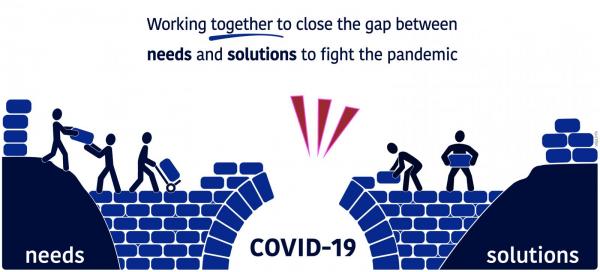Going to Digital Health Overnight - Heart Failure remote monitoring

COVID-19– Can it be the tipping point to implement remote management of heart failure patients
In the COVID-19 pandemic that society is currently facing all over the world, there is an obvious need to push forward and move towards the implementation of remote management tools through “disease management programs-integrated digital health solutions” (DMPi) for patients in risk groups, such as HF patients in order to reduce their exposure to the virus in hospitals and healthcare centers.
However, is it rational to do this beyond the extraordinary circumstances related to COVID-19? There are some strong arguments pointing that this should already been done.
- The “2016 ESC Guidelines for the diagnosis and treatment of acute and chronic heart failure (HF)” recommend enrolling HF patients into disease management programs (DMPs) in order to reduce the risk of re-hospitalization and mortality1.
- A recent study from Denmark demonstrates a 35% cost-saving after implementing a DMPi in HF including using telemedicine2.
Reality, however, shows that the uptake of DMPi in HF is rather low in Europe. For example, recent study in Norway and Lithuania has demonstrated that telemedicine is not yet part of the current clinical practice in those countries3. Following the same line, another study has shown that Sweden and Japan are also not using tele monitoring in HF patients4.
With this expert discussion we aim to shed light in something that appears to be an obvious step, which should have been done even without the COVID-19 pandemic, but still has not really been executed.
- What is the real potential of DMPi to reduce cost and improve patient outcomes?
- What are the barriers to start this implementation?
- What are the key factors to accomplish a successful DMPi implementation?
- What are the research gaps to optimize the utility of DMPi in HF?
- How do drive a policy agenda to support the uptake?
Agenda:
- Case studies
- What were the barriers to overcome in order to initiate the implementation of DMPi?
- Experience and advice from successful DMPi implementation.
- How did the DMPi implementation impact:
- Cost of HF
- Patient reported outcomes
- Staff satisfaction
- Panel discussion
- What is the real potential of DMPi to reduce cost and improve patient outcomes?
- What are the barriers to start this implementation?
- What are the key factors to accomplish a successful DMPi implementation?
- What are the research gaps to optimize the utility of DMPi in HF?
- How do drive a policy agenda to support the uptake?
Confirmed speakers:
- Prof Faiez Zannad, Nancy France
We are looking to have this session in mid May. More info is coming.
1. Ponikowski P, Voors AA, Anker SD, Bueno H, Cleland JG, Coats AJ, Falk V, González-Juanatey JR, Harjola VP, Jankowska EA, Jessup M, Linde C, Nihoyannopoulos P, Parissis JT, Pieske B, Riley JP, Rosano GM, Ruilope LM, Ruschitzka F, Rutten FH, van der Meer P, Members ATF, Reviewers D. 2016 ESC Guidelines for the diagnosis and treatment of acute and chronic heart failure: The Task Force for the diagnosis and treatment of acute and chronic heart failure of the European Society of Cardiology (ESC). Developed with the special contribution of the Heart Failure Association (HFA) of the ESC. Eur J Heart Fail 2016;18(8):891-975.
2. Vestergaard AS, Hansen L]Sørensen SS, Jensen MB, Ehlers LH. Is telehealthcare for heart failure patients cost-effective? An economic evaluation alongside the Danish TeleCare North heart failure trial. BMJ Open 2020;10(1):e031670.
3. Aamodt IT, Lycholip E, Celutkiene J, Strömberg A, Atar D, Falk RS, von Lueder T, Hellesø R, Jaarsma T, Lie I. Health Care Professionals’ Perceptions of Home Telemonitoring in Heart Failure Care: Cross-Sectional Survey. J Med Internet Res 2019;21(2):e10362
4.. Kato NP, Johansson P, Okada I, de Vries AE, Kinugawa K, Strömberg A, Jaarsma T. Heart Failure Telemonitoring in Japan and Sweden: A Cross-Sectional Survey. J Med Internet Res 2015;17(11):e258
